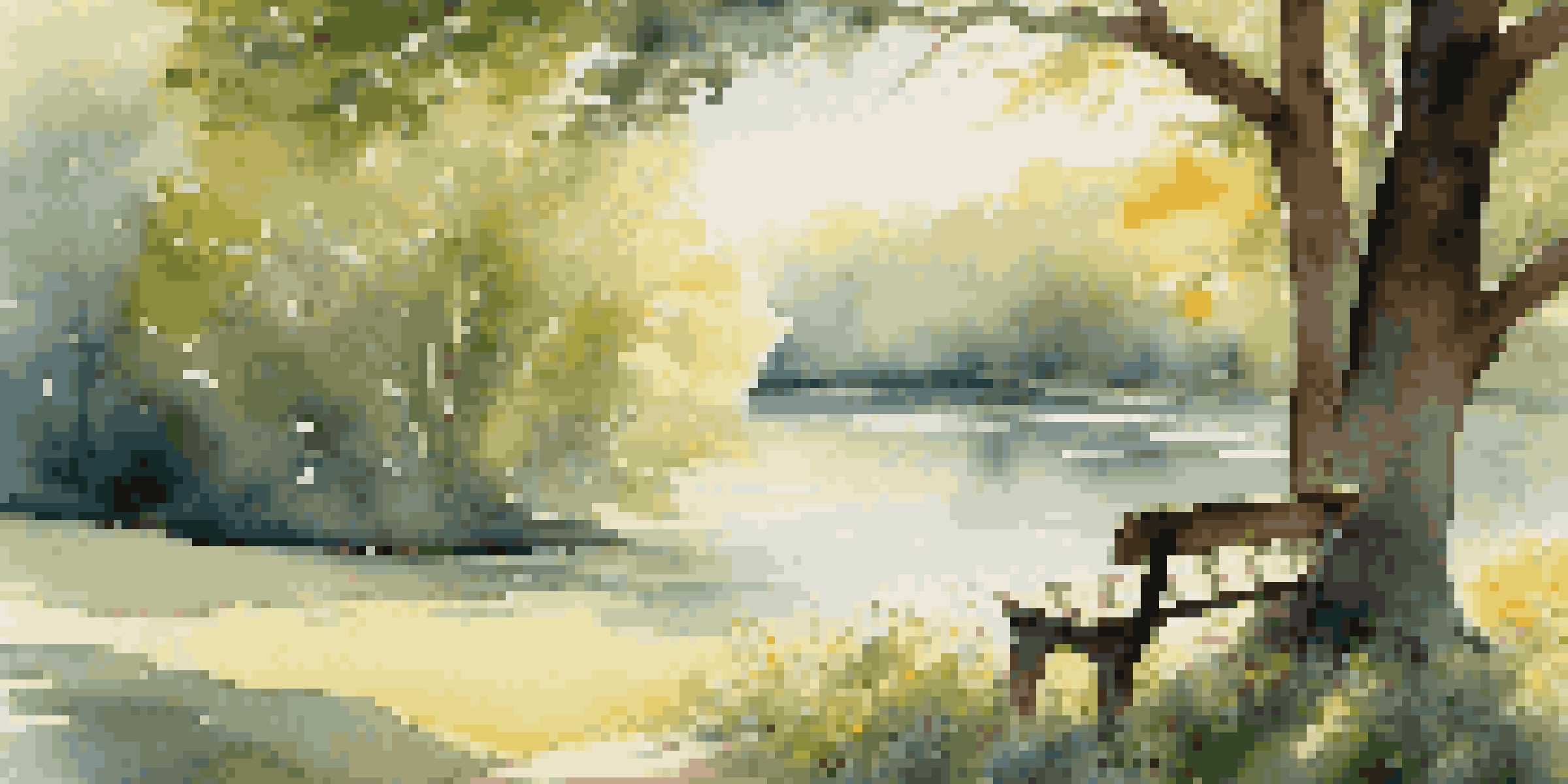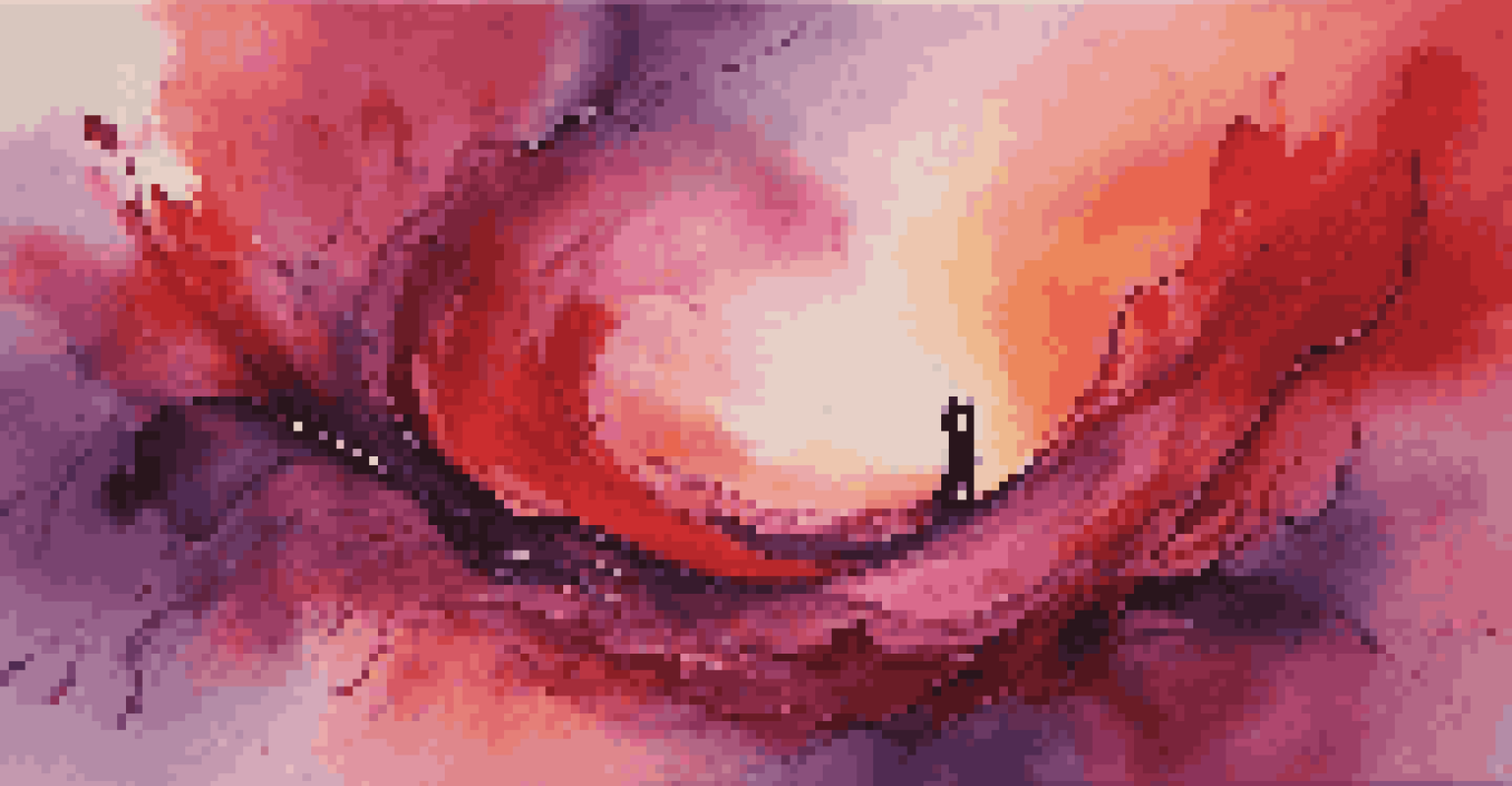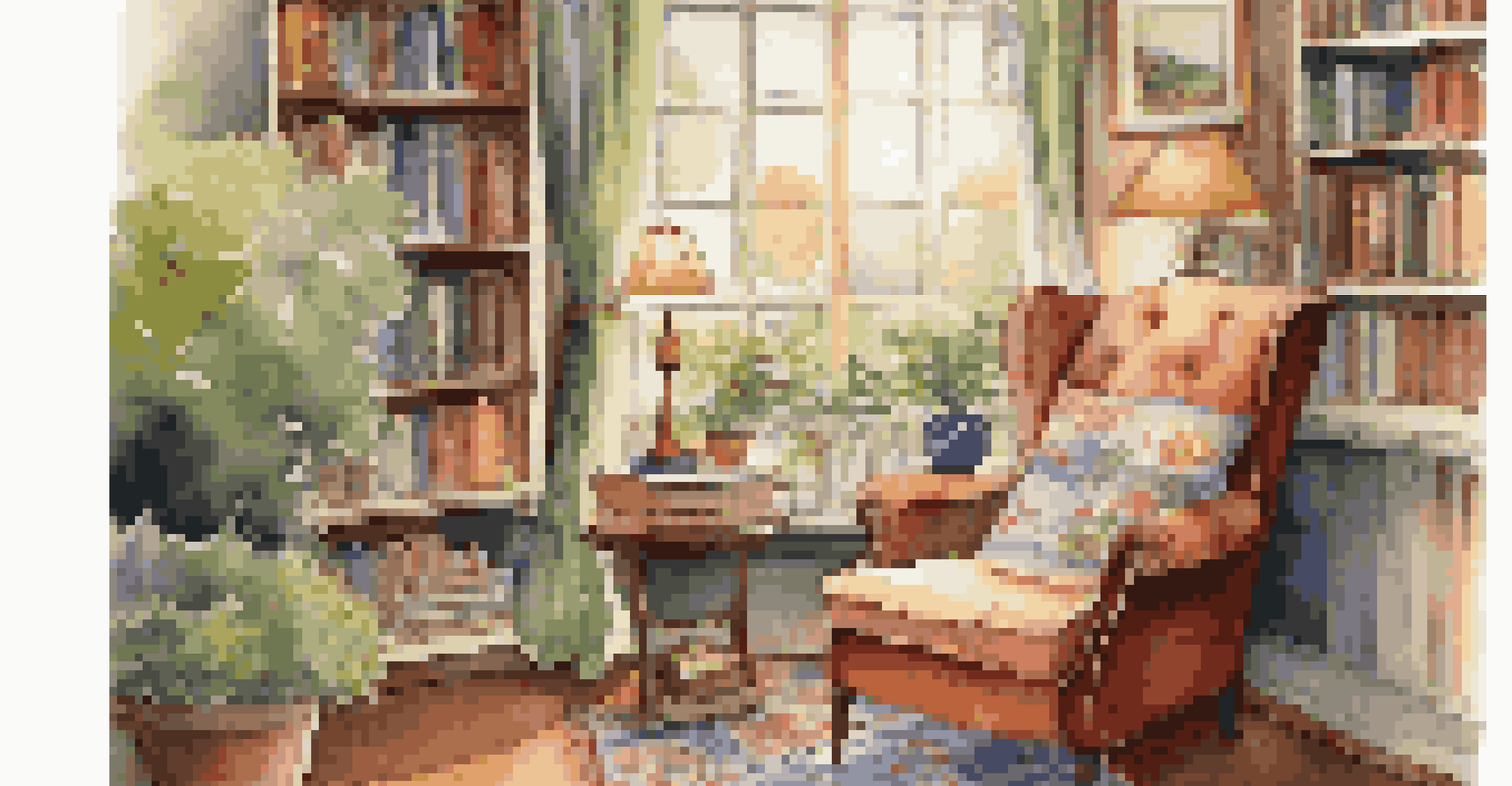The Influence of Literature on Visual Art and Human Insights

The Interplay Between Literature and Visual Art
Literature and visual art have a long-standing relationship, each influencing the other in profound ways. Writers often draw inspiration from visual elements, while artists interpret stories and themes found in literature. This interplay creates a rich tapestry of expression that resonates with audiences on multiple levels.
Art is the most beautiful of all lies.
For instance, think about how Vincent van Gogh’s paintings reflect the emotional intensity found in the works of poets like Vincent van Gogh. The swirling skies and vibrant colors evoke feelings that echo the themes of longing and passion prevalent in their poetry. In this way, literature not only informs but also elevates visual storytelling.
Ultimately, the fusion of these two art forms invites us to explore deeper meanings, allowing a more nuanced understanding of both literature and visual art. This synergy encourages creators to push boundaries, leading to innovative expressions that challenge conventional perceptions.
Literature as a Source of Inspiration for Artists
Many artists turn to literature for inspiration, finding narratives and characters that spark their creativity. Whether it’s the haunting imagery in a gothic novel or the vibrant landscapes in poetry, literature provides a wealth of visual cues. Artists can translate these descriptions into their own visual interpretations, creating pieces that resonate with the themes of the original work.

Take, for example, the way Gustave Doré illustrated Dante's 'Divine Comedy.' His engravings not only depict the scenes described in the text but also convey the emotional weight of Dante’s journey. Through this visual adaptation, Doré invites viewers to experience the narrative in a new, immersive way.
Art Forms Inspire One Another
Literature and visual art influence each other, enriching the storytelling experience through shared themes and emotional depth.
This artistic translation further illustrates how literature can broaden the artist's palette, enabling them to explore complex themes and emotions in their work. The result is a dynamic dialogue between the two forms, enriching both the literature and the visual art.
Visual Art as a Reflection of Literary Themes
Visual art often serves as a mirror reflecting the themes and ideas presented in literature. Artists interpret literary concepts, bringing them to life through color, form, and composition. This reflection not only offers new perspectives on the original text but also invites viewers to engage with the literature in a more tangible way.
Literature is the most agreeable way of ignoring life.
Consider the works of Edward Munch, whose iconic painting 'The Scream' can be viewed through the lens of existential angst, a theme explored in various literary works. By visually representing such themes, Munch connects with audiences who may find resonance in both his art and the literature that inspired it.
By bridging literature and visual art, creators can evoke emotions and provoke thought, encouraging a richer dialogue around the human experience. This synergy serves to deepen our understanding of both art forms and the insights they provide.
Storytelling: A Common Thread in Both Art Forms
At the heart of both literature and visual art lies storytelling. Each medium tells a story, whether through written words or visual imagery. This shared narrative quality allows individuals to connect with ideas and emotions that transcend cultural boundaries.
For instance, the narrative paintings of the Renaissance often depicted stories from mythology or biblical texts, creating a vivid visual representation of well-known tales. These works not only captured the viewer’s attention but also invited them to reflect on the deeper meanings behind the stories.
Cultural Reflections in Art
Both literature and visual art serve as mirrors of society, addressing cultural issues and reflecting the values of their time.
By harnessing the power of storytelling, artists and writers alike can engage audiences on multiple levels, prompting them to explore their own interpretations and insights. This common thread enriches our appreciation for both art forms and highlights the universal nature of human experiences.
The Emotional Impact of Literature on Visual Art
Literature often delves into the complexities of human emotions, providing artists with a wellspring of inspiration. Through the exploration of themes such as love, grief, and joy, writers create narratives that resonate deeply with readers. Artists, in turn, can capture and express these emotions visually, creating a powerful connection between the two forms.
Think of how Frida Kahlo’s self-portraits reflect her personal experiences and the emotional depth found in her diary entries. Kahlo’s art serves as a visual manifestation of her literary explorations, inviting viewers to engage with her emotions in a visceral way.
This emotional impact allows both artists and writers to communicate profound truths about the human condition, fostering understanding and empathy in their audiences. The interplay of these emotions underscores the significance of literature in shaping visual art.
Cultural Reflections in Literature and Visual Art
Both literature and visual art serve as cultural artifacts, reflecting the values, beliefs, and experiences of their time. Artists often draw upon literary works that highlight societal issues, providing commentary through their visual expressions. This cultural reflection fosters a deeper understanding of the human experience across different contexts.
For example, the Harlem Renaissance showcased a vibrant intersection of literature and visual art, with figures like Langston Hughes and Aaron Douglas addressing themes of identity and racial pride. Their works collectively tell a story of resilience and creativity that resonates even today.
Future of Art Collaboration
Emerging technologies are fostering innovative collaborations between literature and visual art, expanding creative possibilities and audience engagement.
By examining the cultural narratives woven into both literature and visual art, we gain insights into the complexities of society. This exploration emphasizes the importance of these art forms in shaping and challenging cultural norms.
The Future of Literature and Visual Art Collaboration
As we look toward the future, the collaboration between literature and visual art continues to evolve. New technologies and mediums are emerging, allowing for innovative ways to blend these two forms. From graphic novels that combine storytelling with illustrative art to interactive installations that engage audiences in narrative experiences, the possibilities are endless.
Moreover, the rise of digital platforms has made it easier for artists and writers to collaborate, creating hybrid forms that challenge traditional boundaries. This cross-pollination not only enriches both art forms but also expands the audience’s engagement with them.

As we embrace this evolution, we can anticipate new insights and experiences that will emerge from the ongoing relationship between literature and visual art. This future promises to deepen our appreciation for both forms, encouraging a vibrant dialogue that continues to inspire.